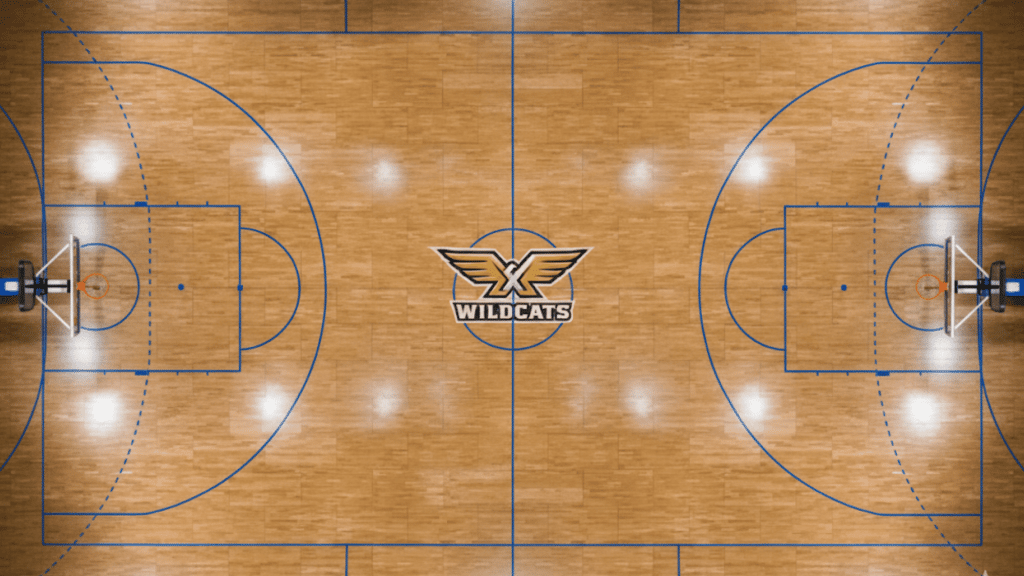Basketball is one of the most exciting and fast-paced sports in the world. Millions of people play it for fun, exercise, or competition.
Even if you are watching a pro game on TV or joining friends at the local court, it helps to know the basic basketball rules.
These rules outline the game’s mechanics, scoring system, and the actions players can and cannot take. Don’t worry, you don’t need to study a huge rulebook to understand them.
In this guide, we’ll break down basketball into simple components, including scoring, fouls, time, and player positions.
By the end, you’ll feel more confident watching or playing, and the game will make a lot more sense.
The Court and Equipment
Before learning the rules of basketball, it is helpful to understand the court and the equipment used in the game. A standard basketball court has two hoops, one on each end, standing 10 feet high.
The main lines on the court include the three-point line, the free-throw line, and the half-court line. These markings help determine where shots are taken and how plays are set up.
The only equipment you really need is a basketball, which comes in different sizes depending on age and level of play. Players also wear jerseys, shorts, and supportive sneakers designed for quick movement and jumping.
While the setup is simple, understanding the court layout and the game’s tools makes it much easier to follow the rules.
Scoring Rules in Basketball

Scoring is the heart of basketball and the part that excites fans the most—it’s how teams win. Players can score points in three main ways:
-
Two points: Any shot made inside the three-point line counts as two points. This includes layups, dunks, and mid-range jump shots. Most baskets in a game are two-pointers.
-
Three points: Shots made from behind the three-point line are worth three points. These long-range shots are more difficult but can change the game quickly.
-
One point: Free throws are worth one point each. These are taken after certain fouls and give a player an uncontested chance to score.
After a team scores, the ball is given to the opposing team to restart play. This keeps the game moving and allows both sides equal chances to score.
For example, if a player is fouled while attempting a three-pointer, they may receive three free throws, which could result in a possible three points without defenders.
Scoring may sound simple, but it adds excitement because teams must balance between safe two-point shots and riskier three-pointers. In close games, free throws often decide the winner.
Time Rules in Basketball

A basketball game is played in timed segments, which keeps the action organized and fair. In the NBA, each game consists of four quarters, each 12 minutes long.
In international games (FIBA), each quarter lasts 10 minutes. College games in the U.S. are typically played in two halves of 20 minutes each.
If the score is tied at the end of regulation time, the game goes into overtime, and extra time is added until a winner is decided. Overtime periods are typically 5 minutes long and can occur multiple times if the tie continues.
Basketball also uses a shot clock, which prevents teams from holding the ball too long. In the NBA, a team has 24 seconds to attempt a shot once it gains possession of the ball. This rule makes the game faster and more exciting.
Coaches can call timeouts to give players a rest, plan a strategy, or stop the momentum of the other team.
In casual pickup games at the park, the rules about timing are often more relaxed, but in official games, time management is crucial.
Fouls and Violations in Basketball

Basketball is a physical sport, but it is governed by rules to ensure fairness and safety.
A foul happens when a player makes unfair or dangerous contact with another player. Common fouls include:
- Personal fouls: These are the most common infractions, including blocking, charging, or hitting another player.
- Shooting fouls: These happen when a player is fouled while trying to shoot. The result is free throws for the player who was fouled.
- Technical fouls: These are issued for unsportsmanlike behavior, such as yelling at referees, taunting other players, or violating bench rules.
In addition to fouls, there are violations, which are rule breaks that don’t involve contact:
- Traveling: Taking too many steps without dribbling the ball.
- Double dribble: Dribbling, stopping, and then starting again.
- Shot clock violation: Failing to shoot the ball before the 24-second clock runs out.
When a team commits too many fouls in a quarter, the other team enters the bonus. This means they get free throws for every foul, which can quickly change the score.
Understanding fouls and violations is crucial because they can significantly shift momentum in a game and give the opposing team an advantage.
Player Positions and Roles
Basketball has five main positions, each with a special role:
| Position | Role / Description |
|---|---|
| Point Guard | The “floor leader” who dribbles, directs plays, and helps teammates get open shots. |
| Shooting Guard | A strong scorer, often the best outside shooter on the team. |
| Small Forward | A flexible player who can shoot, pass, defend, and adapt to many situations. |
| Power Forward | A strong player near the basket who rebounds and scores close to the rim. |
| Center | Usually the tallest player, focused on defense, rebounds, and close-range scoring. |
In casual games, players may not adhere to strict positions, but in professional games, each role is crucial.
Basic Gameplay Flow

Every basketball game begins with a tip-off at center court. The referee throws the ball into the air, and two players jump to try to win possession for their team.
Once a team has the ball, they are on offense and must work together to score points. The other team plays defense, trying to stop shots, steal the ball, or force turnovers.
After a basket, foul, or turnover, the ball goes to the other team.
This constant back-and-forth is what makes basketball so exciting. Teams must move quickly, think fast, and adjust strategies on the fly.
The game continues in this cycle until the clock runs out, and the team with the most points wins.
Wrapping It Up
Learning the rules of basketball is like unlocking the secret to enjoying the game on a deeper level. Understanding scoring, fouls, clock management, and player roles makes the game more exciting and clear.
The beauty of basketball is that it’s simple enough for beginners yet challenging enough for professionals.
You don’t need to be an expert to have fun; just a basic understanding makes playing and watching more rewarding.
So next time you see a fast break, a buzzer-beater, or a big defensive stop, you’ll know exactly what’s happening. That knowledge turns basketball from just a sport into an experience you can truly enjoy.





































